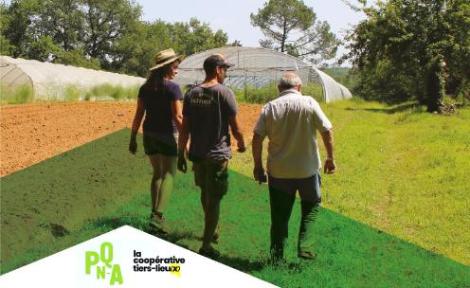Territorial Food Projects and third places for nurturing, how can they cooperate?
2024
Territorial Food Projects (PAT) and third places for food share similar objectives and collaborate on joint projects. To accompany and support collaboration in favour of healthy and sustainable food, conditions, tools and methods need to be developed. In Nouvelle-Aquitaine, PQN-A and the Tiers-Lieux Cooperative are encouraging cooperation between these two communities of actors, which are essential for the future of the region.
To download : plaquettetierslieuxhd_1_.pdf (21 MiB)

“Territorial or local governance is a complex phenomenon that brings stability (compromise and negotiation) and instability (divergence and conflict) within which heterogeneous actors must mobilise around a common goal. In other words, it implies that public institutions no longer have a monopoly on territorial organisation; on the contrary, the decision-making system includes the participation of actors with different interests.” (Coissard and Pecqueur, 2007)
BEING A STAKEHOLDER IN A PAT
The place and role that a third place can play within a PAT depends on the governance and cooperation practices in place in the area. Several ways of participating in PAT bodies can therefore be identified:
-
Participating in the PAT consultation body: This body gathers expectations, priorities and needs and facilitates dialogue between the various actors in the local food system. By participating in these discussions, organisations can make themselves known and present their plans for action within the area. If a project is launched, the body facilitates networking and, in particular, helps participants to identify key players in the area.
-
Contributing to the PAT’s objectives by implementing actions: Cooperation does not require participation in governance bodies. However, dialogue with engineers and reporting to project leaders are necessary to monitor the actions of the third place within the framework of the PAT. This type of participation may take the form of financial support or, more simply, visibility (legitimacy of actions) by local actors.
-
Participate as a member of steering bodies to help make decisions or to make decisions: When setting up its governance bodies, the territory may opt for different operating methods that give a role to private actors. For example, the collegial model includes actors who each represent a part of the food system. In this case, private actors may have a deliberative voice. Please note that a territorial project is always linked to other democratic bodies in the territory (Community Council, etc.). Members may also be invited without a deliberative vote. Their presence helps to fuel the strategic dialogue on the territorial project. The aim is to assist in decision-making by contributing their perspective and experience. It also allows them to be at the heart of the territorial project.
Who to contact?
The PAT project leader and/or their elected representative and/or the president of the supporting organisation.
How to get involved?
It is important to find out about the PAT bodies and get in touch with their members in order to make yourself known and learn about the PAT.